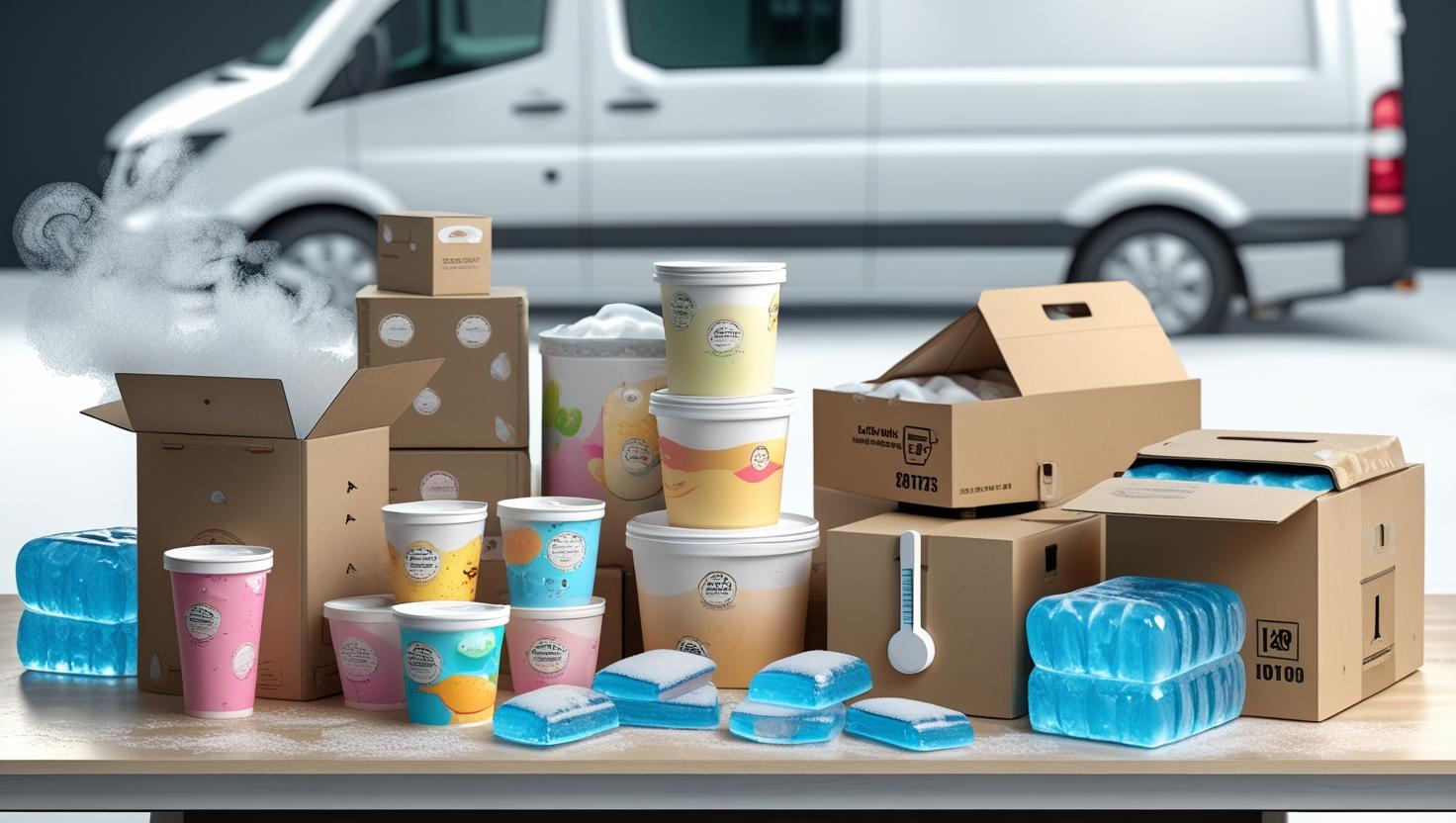The Ultimate Guide to Ice Cream Packaging: Best Methods, Materials & Delivery Tips

Strong 8k brings an ultra-HD IPTV experience to your living room and your pocket.
Ice cream is one of the most loved frozen treats worldwide. Whether you're a local creamery or a large-scale producer, packaging ice cream properly is crucial to ensure product freshness, flavor retention, and safe delivery. With changing trends in consumer preferences and sustainability concerns, ice cream packaging has also evolved significantly over the years.
In this blog, we’ll answer key questions like:
- What is the best packaging for ice cream?
- How to do the packaging of ice cream the right way?
- Why did they stop putting ice cream in boxes?
- How to package ice cream for delivery without melting?
Let’s dive into the sweet science of packaging frozen goodness.
What is the Best Packaging for Ice Cream?
The best packaging for ice cream is multi-layered, insulated, leak-resistant, and designed to maintain temperature. Some of the most effective packaging materials and styles include:
1. Paperboard Tubs with Poly Coating
These are the classic ice cream containers you see in most supermarkets. They're lightweight, printable, and include a plastic lining that resists moisture.
2. Plastic Containers (HDPE or PET)
Plastic containers are durable, reusable, and offer strong barrier protection. They're also great for maintaining shape during freezing and handling.
3. Thermoformed Containers
Designed for single-serve or novelty ice creams, these are custom-molded and offer excellent visual appeal and convenience.
4. Compostable or Biodegradable Packaging
As sustainability becomes more important, some brands now use compostable materials like bagasse, PLA-coated paper, or molded pulp.
5. Insulated Mailer Boxes (For Delivery)
For online orders or home delivery, an extra layer of EPS foam or thermal liners with dry ice or gel packs is essential.
How to Package Ice Cream?
Ice cream is highly sensitive to temperature changes, air exposure, and contamination. Here's how to do its packaging properly:
Step-by-Step Ice Cream Packaging Process:
- Fill at Low Temperature: Ice cream should be packaged at -20°C to -30°C to prevent melting and maintain consistency.
- Choose Airtight Containers: Use containers with tight-sealing lids to prevent freezer burn and moisture loss.
- Labeling: Include flavor name, ingredients, storage instructions, and expiration date.
- Sealing: Utilize heat-sealing or tamper-evident seals to ensure hygiene and maintain consumer trust.
- Storage: Keep in a blast freezer before transportation to lock in shape and flavor.
💡 Pro Tip: Always test packaging under cold chain conditions before launching to ensure no cracks or leaks occur over time.
Why Did They Stop Putting Ice Cream in Boxes?
If you’ve noticed, ice cream boxes especially the rectangular paperboard ones—are not as common as they used to be. Here's why:
Downsides of Traditional Ice Cream Boxes:
- Leaks and Warping: The paperboard box could absorb moisture, leading to sogginess and structural failure.
- Poor Reseal ability: Boxes were hard to reseal after opening, making them less convenient for multi-serve use.
- Inefficient Insulation: These boxes often lacked thermal insulation, causing quicker thawing during transportation.
- Less Branding Flexibility: Round or custom-molded tubs offer more surface area and visibility on shelves.
As a result, most brands shifted to tub-shaped containers and thermoformed plastic options, which are more durable, secure, and customer-friendly.
How to Package Ice Cream for Delivery?
Delivery is a game-changer for frozen desserts—but also a major challenge. To avoid melted messes, follow this expert ice cream delivery packaging method:
Ideal Packaging Process for Ice Cream Delivery:
- Primary Packaging: Use tamper-proof, leak-resistant containers (like PET or lined paperboard).
- Secondary Insulated Packaging: Place the ice cream into an EPS foam cooler, thermal pouch, or insulated box.
- Coolant Addition: Add dry ice or gel packs depending on the delivery time and temperature. Dry ice is best for longer distances.
- Secure Boxing: Use a corrugated shipping box to protect the inner packaging. Fill empty space with padding to prevent shifting.
- Labeling: Mark boxes with “Perishable” or “Keep Frozen” and include handling instructions.
- Fast Logistics: Partner with reliable couriers that offer cold chain delivery services or same-day/overnight shipping.
Bonus Tips for Ice Cream Brands:
Custom Packaging: Custom Ice box packaging with logo helps build brand recognition and looks professional.
Eco-Friendly Options: Go green with biodegradable tubs and avoid single-use plastics.
Batch Coding: Helps with traceability and compliance with food safety standards.
Flavor Separation: Keep bold flavors (like mint or coffee) in separate packaging to avoid cross-contamination.
Conclusion
Ice cream packaging is much more than putting a frozen scoop into a container. From selecting the right material to ensuring safe delivery, each step matters in maintaining quality and customer satisfaction. As the frozen dessert industry grows, so does the need for innovative, sustainable, and secure ice cream packaging solutions.
Whether you’re a small ice cream shop or a large food brand, using the right packaging methods will help your ice cream travel safely from freezer to spoon every single time.
If you’re a business looking to design custom ice cream packaging, consider working with experts who understand the importance of both aesthetics and function in frozen food packaging.
Need custom ice cream boxes for your brand?
Contact Need Custom packaging Company for leak-proof, freezer-grade, and beautifully printed packaging that keeps your frozen delights perfectly chilled.
FAQs
What is the best packaging material for ice cream?
The best materials are poly-coated paperboard tubs, plastic containers, and insulated mailers for delivery. These maintain temperature and resist leaks.
Can I use dry ice for shipping ice cream?
Yes. Dry ice is ideal for long-distance shipping of ice cream as it keeps the product frozen for extended hours.
Why don’t brands use rectangular boxes for ice cream anymore?
Rectangular boxes often failed in insulation, leaked, and lacked reseal ability. Tubs and plastic containers are more efficient and consumer-friendly.
How to ensure ice cream stays frozen during delivery?
Use insulated packaging with dry ice or gel packs, secure secondary boxing, and fast cold-chain logistics.
Note: IndiBlogHub features both user-submitted and editorial content. We do not verify third-party contributions. Read our Disclaimer and Privacy Policyfor details.







